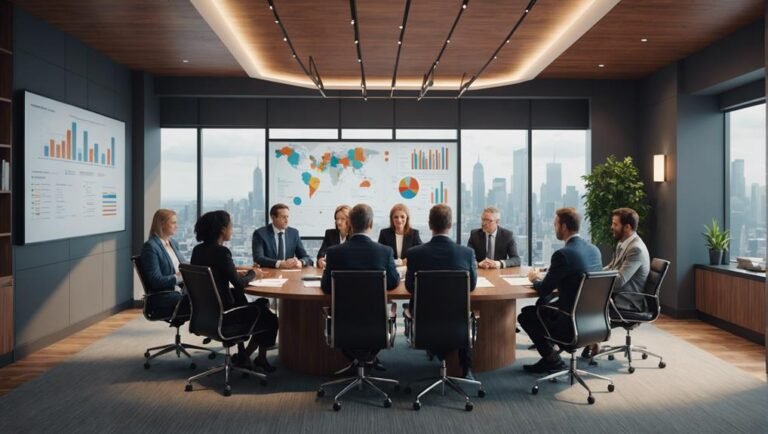Copyright Infringement: Definition, Meaning, Example and Criteria
Copyright infringement involves using copyrighted material without authorization, violating the owner's rights. It includes reproduction, distribution, or sharing of protected content. Criteria for infringement include copying protected elements, access to copyrighted material, and proving non-coincidental similarities. Real-life instances include music piracy and movie bootlegging. Enforcement challenges arise due to digital advancements, necessitating international collaborations. Copyright violations threaten creators' rights, finances, and reputation, emphasizing the need for vital protection measures. Understanding the implications and legal aspects of infringement is essential for safeguarding intellectual property.
Key Takeaways
- Copyright infringement involves unauthorized use of protected material.
- Proving infringement requires reproduction, access, and non-coincidental similarities.
- Defending rights involves showing original creation and ownership.
- Real-life examples include music piracy and movie bootlegging.
- Legal aspects encompass enforcement challenges and international collaborations.
Understanding Copyright Infringement
Copyright infringement, which is the unauthorized use of copyright-protected material, poses significant challenges to creators and industries reliant on intellectual property rights. Copyright protection is essential for safeguarding the rights of creators and ensuring fair compensation for their work.
However, with the rise of digital piracy, where copyrighted material is easily duplicated and distributed online without permission, enforcing copyright protection has become increasingly intricate. Digital piracy not only undermines the financial incentives for creators but also hinders innovation and creativity in various industries.
To combat this issue effectively, it is vital for policymakers and stakeholders to implement robust measures that deter and penalize copyright infringement while promoting respect for intellectual property rights.
Key Criteria for Copyright Infringement
Analyzing the substantial similarities between the original copyrighted work and the allegedly infringing material is a fundamental criterion in determining copyright infringement.
- Proving Infringement:
- Establishing that the allegedly infringing material reproduces the protected elements of the original work.
- Demonstrating that the infringing material was accessed by the infringer.
- Showing that the similarities between the two works are not merely coincidental but result from copying.
- Defending Rights:
- Presenting evidence of original creation and ownership of the copyrighted work.
- Utilizing registration certificates as proof of copyright ownership.
- Engaging legal counsel to enforce and defend copyright claims in court.
Real-Life Examples of Copyright Infringement
In examining instances of copyright infringement in real-life scenarios, it becomes evident how the legal criteria for establishing infringement are applied and enforced. One prevalent example is music piracy, where individuals illegally download and distribute copyrighted music without permission. This practice greatly impacts the music industry's revenue and artists' livelihoods.
Another common form of copyright infringement is movie bootlegging, where unauthorized copies of films are made and distributed, depriving creators of their rightful earnings. Both music piracy and movie bootlegging highlight the challenges of enforcing copyright laws in the digital age and emphasize the importance of protecting intellectual property rights to sustain creativity and innovation within these industries.
Legal Aspects of Copyright Infringement
Examining the legal intricacies surrounding unauthorized use of copyrighted material sheds light on the complexities and implications of copyright infringement.
- Enforcement Challenges:
- The enforcement of copyright laws faces hurdles in the digital era due to the ease of reproduction and distribution of content.
- International Collaborations:
- International cooperation is essential in combating cross-border copyright infringement, as laws and enforcement mechanisms vary between countries.
- Legal Implications:
- Copyright infringement can lead to legal actions against entities like file providers, Internet Service Providers (ISPs), and users, with potential damages and fines imposed.
Meaning and Impact of Copyright Infringement
Copyright infringement poses a significant threat to the integrity of creative works and the financial interests of copyright holders in various industries. The impact of copyright infringement can result in severe consequences for both the creators and the industry as a whole.
Not only does it undermine the exclusive rights of copyright holders, but it can also lead to significant financial losses through decreased sales and royalties. Additionally, the reputation and market value of the infringed works may suffer, impacting future opportunities for the creators.
Legal actions against infringers can result in costly lawsuits and damages, further emphasizing the importance of upholding copyright protection to maintain a fair and sustainable creative environment.
Conclusion
In the intricate tapestry of intellectual property rights, copyright infringement looms as a shadowy specter, casting doubt upon the sanctity of creative endeavors. Like a thief in the night, unauthorized utilization of copyrighted material undermines the very foundation of artistic expression.
As global cooperation and harmonization efforts work diligently to combat this menace, the need for robust enforcement mechanisms becomes ever more pressing, ensuring that the light of creativity can continue to shine unimpeded.







